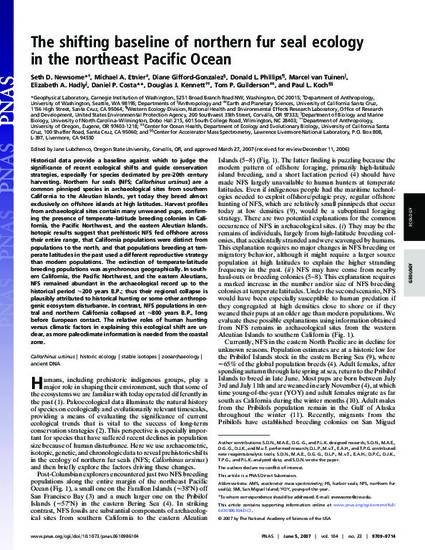
- Callorhinus ursinus,
- Historic ecology,
- Stable isotopes,
- Zooarchaeology,
- Ancient DNA
Historical data provide a baseline against which to judge the significance of recent ecological shifts and guide conservation strategies, especially for species decimated by pre-20th century harvesting. Northern fur seals (NFS; Callorhinus ursinus) are a common pinniped species in archaeological sites from southern California to the Aleutian Islands, yet today they breed almost exclusively on offshore islands at high latitudes. Harvest profiles from archaeological sites contain many unweaned pups, confirming the presence of temperate-latitude breeding colonies in California, the Pacific Northwest, and the eastern Aleutian Islands. Isotopic results suggest that prehistoric NFS fed offshore across their entire range, that California populations were distinct from populations to the north, and that populations breeding at temperate latitudes in the past used a different reproductive strategy than modern populations. The extinction of temperate-latitude breeding populations was asynchronous geographically. In southern California, the Pacific Northwest, and the eastern Aleutians, NFS remained abundant in the archaeological record up to the historical period ≈200 years B.P.; thus their regional collapse is plausibly attributed to historical hunting or some other anthropogenic ecosystem disturbance. In contrast, NFS populations in central and northern California collapsed at ≈800 years B.P., long before European contact. The relative roles of human hunting versus climatic factors in explaining this ecological shift are unclear, as more paleoclimate information is needed from the coastal zone.
This article contains supporting information online at www.pnas.org/cgi/content/full/0610986104/DC1.
Available at: http://works.bepress.com/michael-etnier/34/

This article contains supporting information online at www.pnas.org/cgi/content/full/0610986104/DC1.